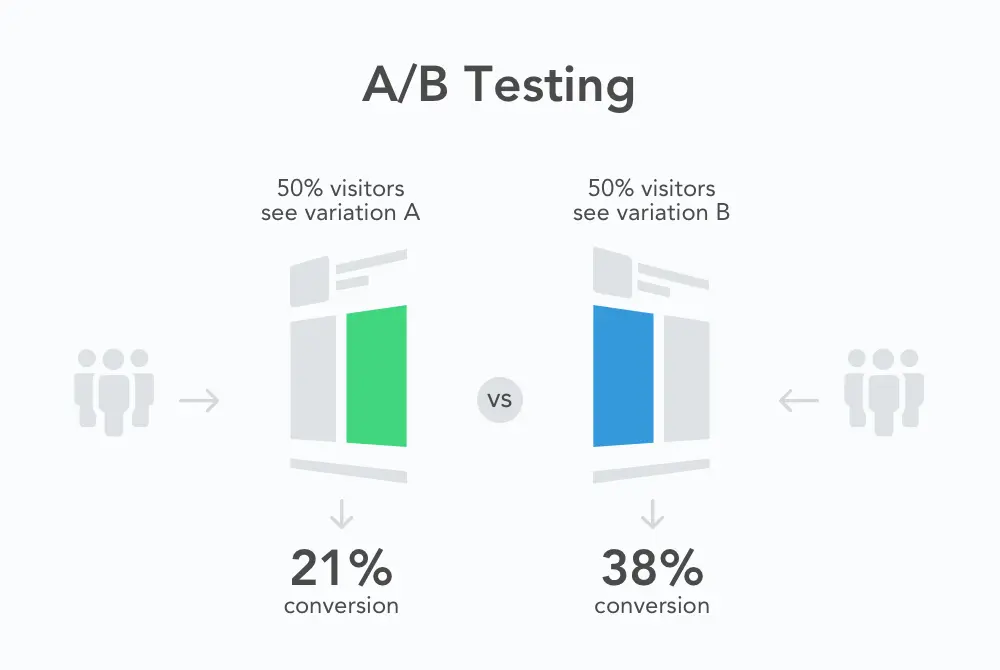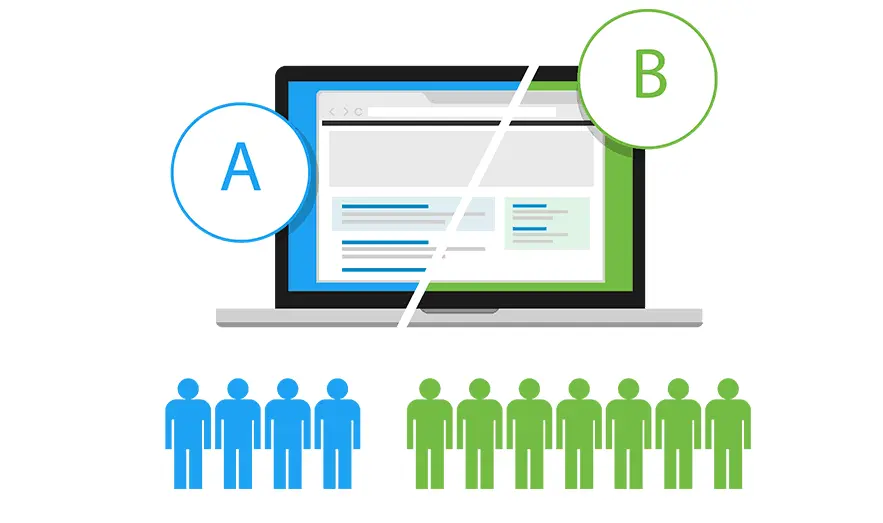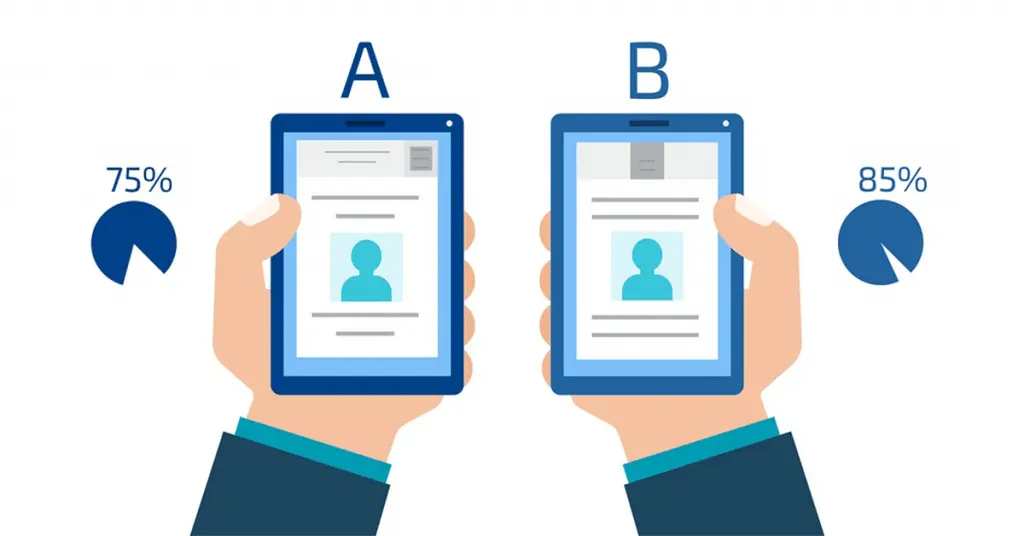Shopify A/B Testing: All You Need to Know

You've probably read innumerable articles and resources about A/B testing, whether you're an established business owner or just started. Your social media postings or email subject lines may have previously undergone A/B testing.
Despite the fact that A/B testing has received a lot of attention in the marketing world, many people continue to get it wrong. As a result? On the basis of erroneous test results, significant business decisions are made.
A/B testing is frequently oversimplified, particularly in content created for store owners. All that you desire to know to get started with various sorts of A/B testing for eCommerce is outlined as simply as possible here. Shopify A/B testing may be a game changer when it comes to selecting the correct product positioning, improving conversions on a Shopify landing page, and so much more.
What is A/B testing?

The technique of considering two versions of the same homepage, email, or other digital assets to see which one works better based on user behavior is known as A/B testing, sometimes known as split testing. It's a helpful tool for enhancing the effectiveness of a marketing campaign and learning more about what influences your target audience to convert.
This procedure enables you to respond to crucial business queries, aids in increasing income from current traffic, and lays the groundwork for a data-driven marketing strategy.
How A/B testing operates?

When doing A/B testing in advertising, you present version A of your asset (let's call this the "control") to 50% of users and version B (let's call this the "variant") to 50% of visitors.
The version with the highest rate of conversion wins. Consider the case where the variant (version B) produced the highest exchange rate. Then you would deem it the victor and direct all visitors to the variant.
After then, the variant becomes the new control, and a new variant needs to be created. It's important to note that the conversion rate of an A/B test can frequently be an unreliable indicator of success.
For instance, it won't offer any truly insightful information if you price an item at $50 on one page and give it away on the other. It must be strategic, just like any other tool or company plan that you employ.
Because of this, you should follow a conversion's value all the way to the point of sale.
Why conduct an A/B test?

Take the example where you pay $100 on Facebook ads to drive 10 people to your website. $25 is the typical order value. The remaining two customers each spend $25, while the other eight customers leave empty-handed. What happened? You were out $50.
Now imagine that you spend $100 on Facebook advertisements to drive 10 people to your website. Nonetheless, $25 is the average order value. Only five of those customers depart empty-handed this time around, and the remaining five each spend $25. What happened? You earned $25.
Unsurprisingly, this is among the more straightforward A/B testing examples. But, you made the same traffic more valuable by raising your online store's conversion rate.
Whether your test is successful or unsuccessful, A/B testing your images and copy can help you learn new things. It is fairly easy to transfer this value. A value proposition, a product video, or other product descriptions, for instance, can benefit from a copywriting insight from an A/B test on a product description.
Also, you can't discount the intrinsic benefits of consistently enhancing the efficiency of your online store.
How to run A/B tests in your Shopify store?
Step 1. Characterize your hypothesis

The whole point of A/B testing is to evaluate the reliability of a hypothesis — that is, an assertion you make about your store. Every hypothesis must be based on current data, including:
- Web analytics
- Heatmaps
- Surveys
- Interviews
- Consumer research
Let's assume you get the following assumption about your Shopify store: "displaying the shipment and return policies near the "Add to Cart" button will boost the checkout exchange rate".
The "null hypothesis" is what we call this assumption.
Note that we are talking about a “hypothesis” and not an “idea” because the latter is the result of creative activity — a “brainstorming session” — whereas the former comes out of your data.
In our example, your hypothesis could have come from your customer support tickets, which show that a significant volume of visitors asks for your shipping and return policies before making (or finishing) a purchase.
Your hypothesis must have an eCommerce metric — a KPI, to be more precise — attached to it that defines whether the A/B test is successful or not. In our example, we could use the checkout conversion rate, but also the add-to-cart conversion rate.
We'll use a hypothesis kit to develop a hypothesis for your A/B tests:
Because we saw [insert your data or user feedback]
We anticipate that [change in variant version] will contribute to [result].
We'll use [data metric] to assess this.
In our instance, the hypothesis kit might look like this:
Because we saw a high volume of visitors inquiring about our shipping and return policies, we contacted customer service.
We anticipate that adding our shipping and return policies below our "Add to Cart" button will increase conversion rates.
We'll use the checkout conversion rate to evaluate this.
The results of your tests will inform you whether your null hypothesis is correct or not. If not, the test was won by the variant version (the "B"). If that is the case, the control version (the "A") will have won and everything will remain the same.
Step 2. Choose and install your A/B testing software code
Shopify clients cannot perform the technical process of running A/B tests in their stores on their own (Shopify Plus users can conduct A/B tests by default, but I assume you are not a Plus user).
Because of this, you must employ a third-party A/B testing software program. Three of the most well-liked A/B testing software programs on the market are as follows:
- Optimizely
- VWO
- OmniConvert

With the exception of cost and complexity, these tools are very similar to one another. You should evaluate each one and choose the one that best suits your requirements and price range.
Neat and Shogun are just two examples of Shopify apps that focus on A/B testing. They are a great inexpensive substitute for the other tools listed earlier because they are less complex and better tailored to Shopify eCommerce stores.
After selecting the ideal tool, you must install its JavaScript code on your website, exactly like you did with your Google Analytics account as well as other pixel-based applications.
Step 3. Create the tests
You need to design your tests once you have your hypothesis. Although each A/B testing tool operates differently, you will always be designing the adjustments for the variant version.
Shogun is a special Shopify A/B testing software.
By now, it should be evident what you need to accomplish; the important part is how you're going to create your variant page.
It is obvious from the preceding example that the shipping and return policies need to be added underneath the "Add to Cart" button, but where exactly should they go? What will the space and padding be between the link between the CTA and the policies? How about the hue? Should the links be highlighted?
Before completing the test design process, you must provide answers to these questions. If at all feasible, talk to your design and marketing teams about your design possibilities.
Step 4. Start the test–0-0
You can launch the test after creating your variant page. How long will I conduct this test? is the inquiry you need to ask.
"When your test matches the predefined sample size," is the simplest response. Simple but insufficient Why? You are lacking one crucial element, namely timing.
Shopping preferences vary widely among consumers; some like to shop on weekends, others at the end of the month, and so forth. In addition to geography, weather, and holidays, other factors affect your company cycle.
Your customers will be able to answer this question most succinctly: how long does it take them to shop? Do they spend weeks doing the research before buying, or do they frequently make spontaneous purchases of your products?
You can only complete a test once all of these considerations have been made. Wait at least a week before concluding your test, even if it includes more participants than the required minimum sample size.
Step 5. Analyze the data
You will need to determine which version of the test was the winner after your A/B tool has accumulated a lot of data.
Your chosen A/B testing tool will display the findings and suggest the victor. The tool recommends the winner once the A/B test on your Shopify site is complete.
You might first be tempted to select the variant that produced the greatest lift for the metric of your choice. However, keep in mind to take other measures into account, such as:
- Rate of add-to-cart conversion
- Rate of abandoned carts
- Net income
Also, you should segment your data. As you segment the results, you'll see that your alternate hypothesis was validated among some segments, contrary to what the aggregated data will suggest, which can tempt you to make a quick decision. You should include the following segments in your analysis:
- User type: New or returning users
- Desktop operating systems: Mac, Windows, and Linux
- 2 mobile operating systems: iOS and Android
- Device: desktop, mobile, and tablet
- Browser: Chrome, Firefox, Safari
- Medium: Organic search, paid, social media
- Account: Logged-in or guest visitors
Imagine if, in our case, the variant page didn't significantly increase the checkout conversion rate.
Yet, when segmenting the data, you can observe that the variant did produce a sizable rise for your visitors who are logged in. Also, that lift decreased the number of customer support tickets you received for that market, which indirectly raised your net profit.
You must consider your sample size and conversion rates in this situation. Are the conversions produced by the visitors who have logged in statistically significant? If so, the alternative version is the winner. If not, you must carry out the test repeatedly until the results for this particular segment are statistically significant.
Does Shopify allow AB testing?
Shopify doesn't have built-in AB testing functionality, but you can use third-party apps from the Shopify App Store to enable AB testing on your Shopify store.
How do I set up AB testing on Shopify?
To set up AB testing on Shopify, install a third-party AB testing app from the Shopify App Store and follow their instructions to create variations, define goals, run the test, and analyze results.
What is AB testing in eCommerce?
AB testing in ecommerce involves comparing different variations of webpages, design elements, or marketing messages to determine which version performs better in terms of user engagement, conversions, and predefined metrics.
What is the AB testing condition?
The AB testing condition refers to the criteria or setup for conducting an AB test. It involves randomly assigning visitors or users to different versions (A and B) and collecting data to analyze the performance and determine the better-performing variation based on predefined goals and metrics.
Final Thoughts on Shopify A/B Testing
Certainly, you don't want your internet store to remain static. You must first understand what your users require before making any modifications to the way it looks. In the end, it is your audience who makes you money.
How do you get your consumers' opinions without addressing them directly? Do A/B tests on Shopify. They can help you realize what has to be changed on your website through their rigorous study.


